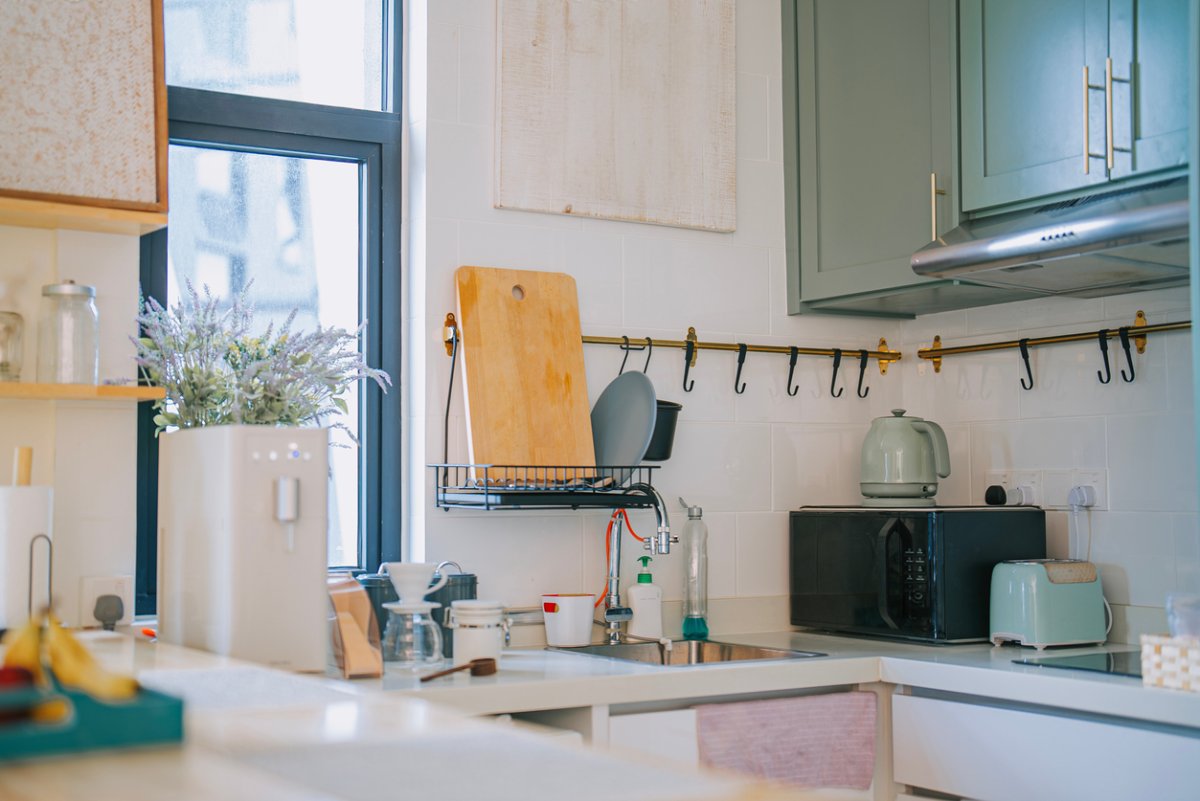We may earn revenue from the products available on this page and participate in affiliate programs. Learn More ›
Never underestimate the power of paint colors for small kitchens. Home cooks may feel cramped in their culinary domain, but a well-chosen paint finish in a strategic color can be transformative. Even though wall and accent colors may not make the footprint of your kitchen bigger, they can make it feel more expansive, calm, and stylish.
We spoke with two interior designers about their thoughts on paint colors for small kitchens, and they had a lot to say about it. Small kitchen paint colors are not one size fits all, as Ryan Harkrider, an interior designer with Portland, Oregon-based Wise Designs, points out: “Each home’s light, orientation, space, adjacencies, volumes are all unique.” To help make your limited cooking space feel more inviting, check out the below expert-recommended small kitchen paint colors from trusted paint brands.
RELATED: What’s the Difference? Eggshell vs. Satin
1. White
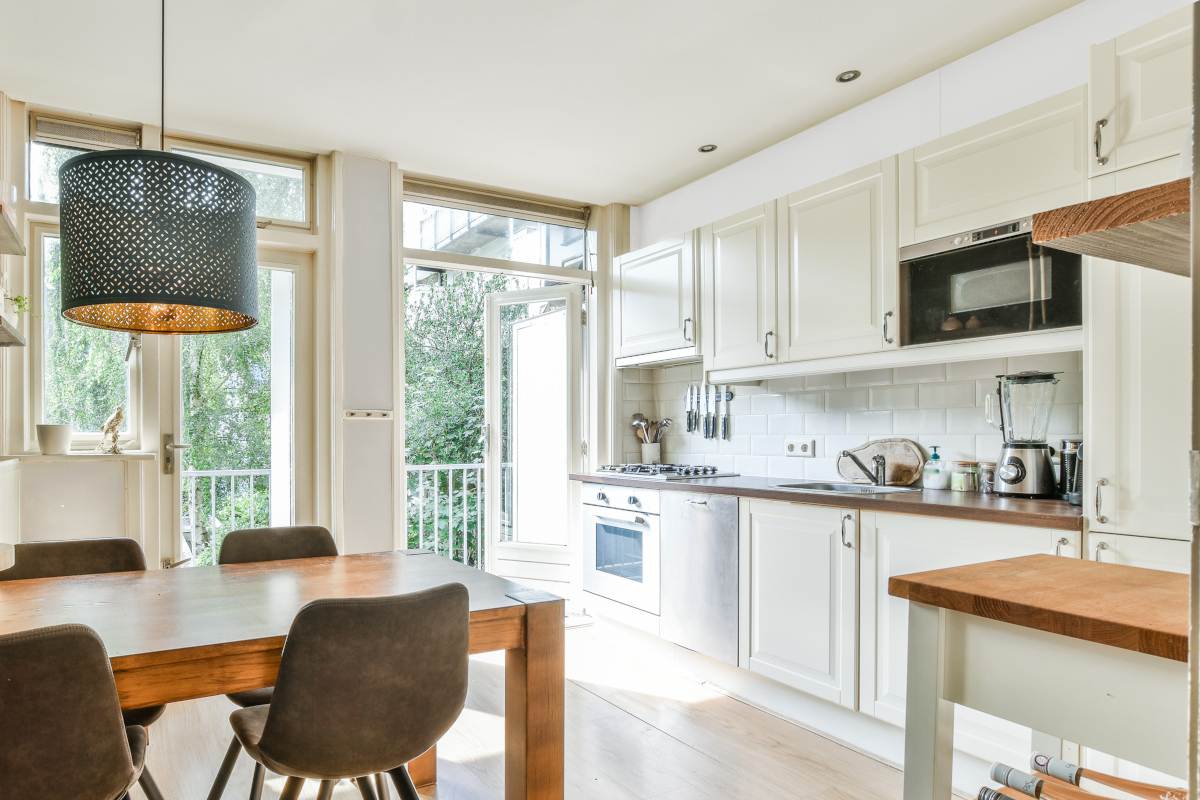
A crisp white is one of the best colors for small kitchens because many feel like white goes with virtually anything. It’s clean and fresh and seems brighter because it helps reflect the light in the room.
Amy Peltier, founder and creative director of Amy Peltier Interior Design in San Marino, California, recommends, “If you have a small kitchen without a lot of natural light, then a white color is most likely your best option for making the space feel updated and larger than it actually is.”
Some go-to white colors include Benjamin Moore’s Super White and Glidden’s Commercial White.
2. Earthy Green
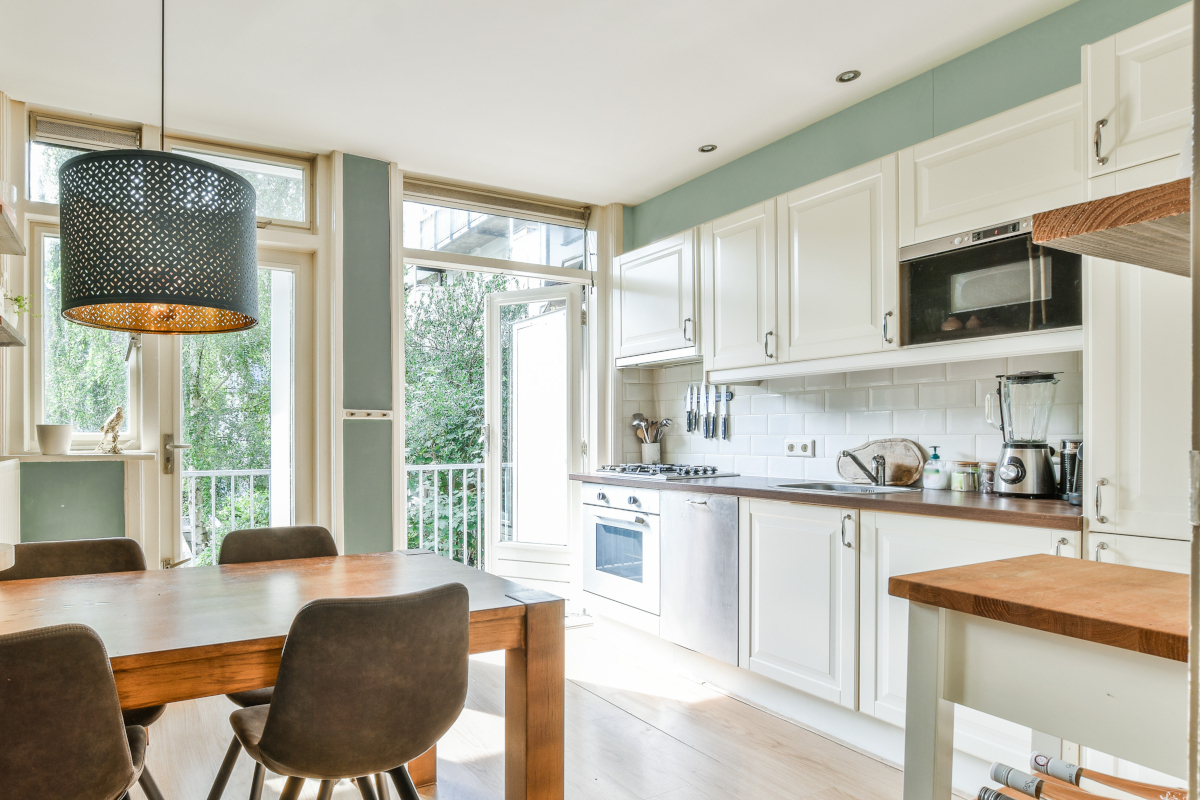
There’s a good reason why many people keep plants in the kitchen: We naturally associate green with nature and health. Green is lovely on walls or as cabinet colors for small kitchens to bring the feeling of the outdoors into a cooking space, especially if you have big windows to bring in extra light. Green is considered a soothing and relaxing color—feelings that pair well with making a meal at any time of day.
Consider choosing light earthy greens like Glidden’s White Sage or darker Dwarf Spruce that may evoke the sensation of the outdoors inside your kitchen.
3. Light Gray
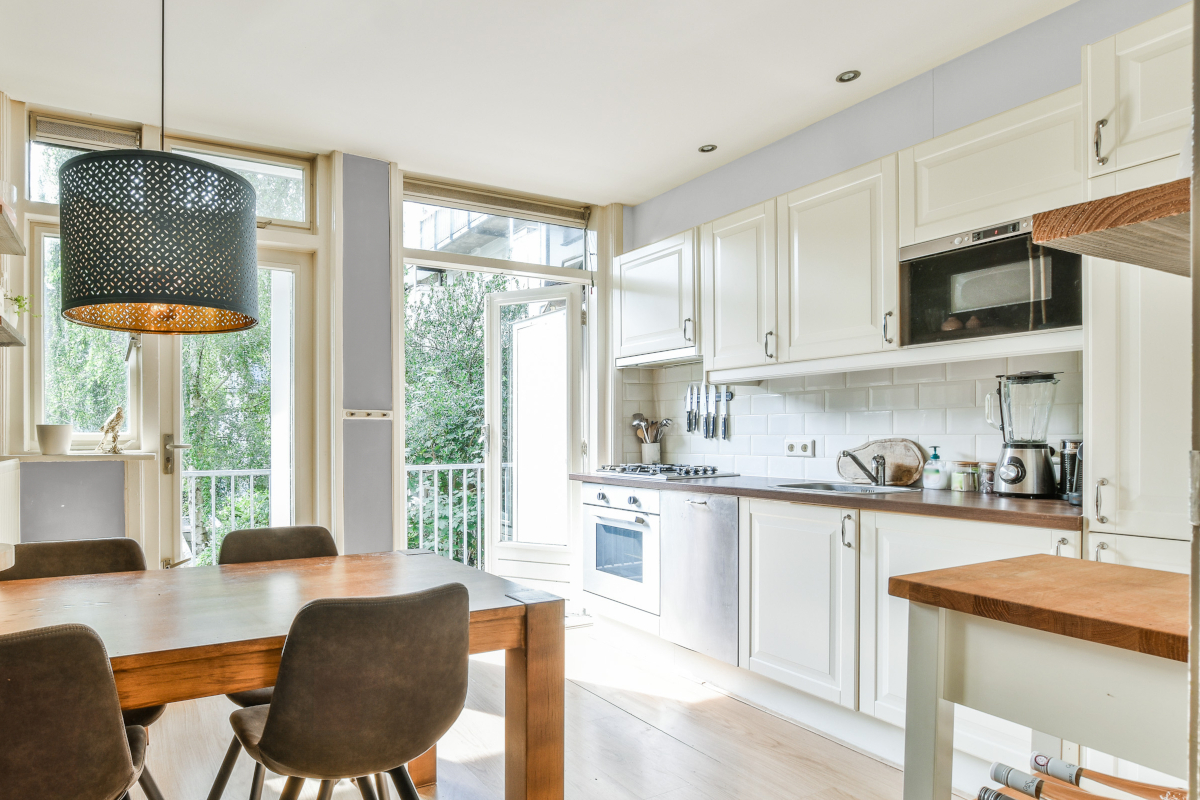
Sticking to light neutral small kitchen paint colors is a smart move to create the illusion of spaciousness. It also provides a versatile backdrop for your kitchen. Light gray is sophisticated and modern without the clinical appearance—and cleaning demands—of a crisp white. This neutral hue works well in many types of home decor, including minimalist and contemporary design styles.
Small-kitchen friendly neutrals like Classic Gray from Benjamin Moore allows other colors to pop.
4. Minty Blue
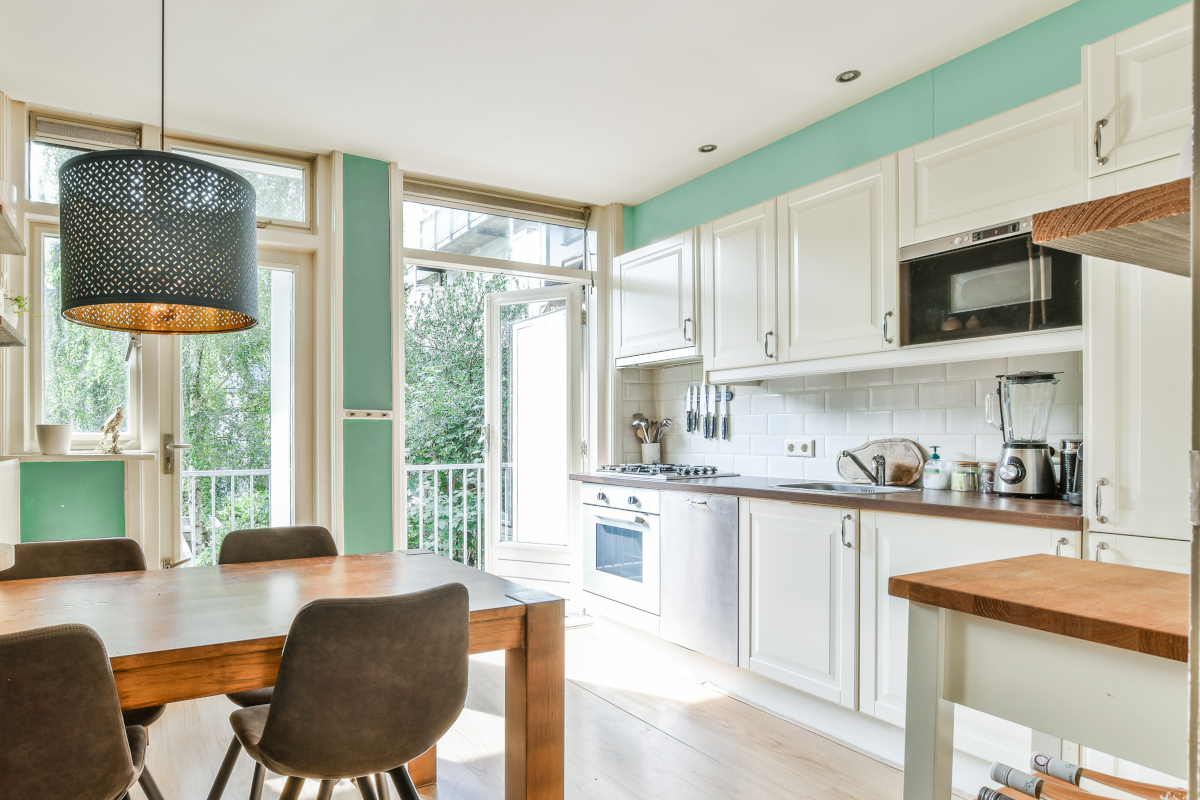
When painting a small kitchen, the safe choice is to use a neutral color for the walls, but a touch of color may be what you need to love this room. Peltier points out, “A fresh and bright color such as a sea foam green with a gray undertone on kitchen walls can make a space feel really vibrant and alive without making it feel like it’s smaller in size.”
Minty or icy blue paint colors make a small kitchen feel fresh. A color like Benjamin Moore’s Seafoam Green may make the space more inviting and bring a smile to your face every time you enter the room.
5. Blue-Gray
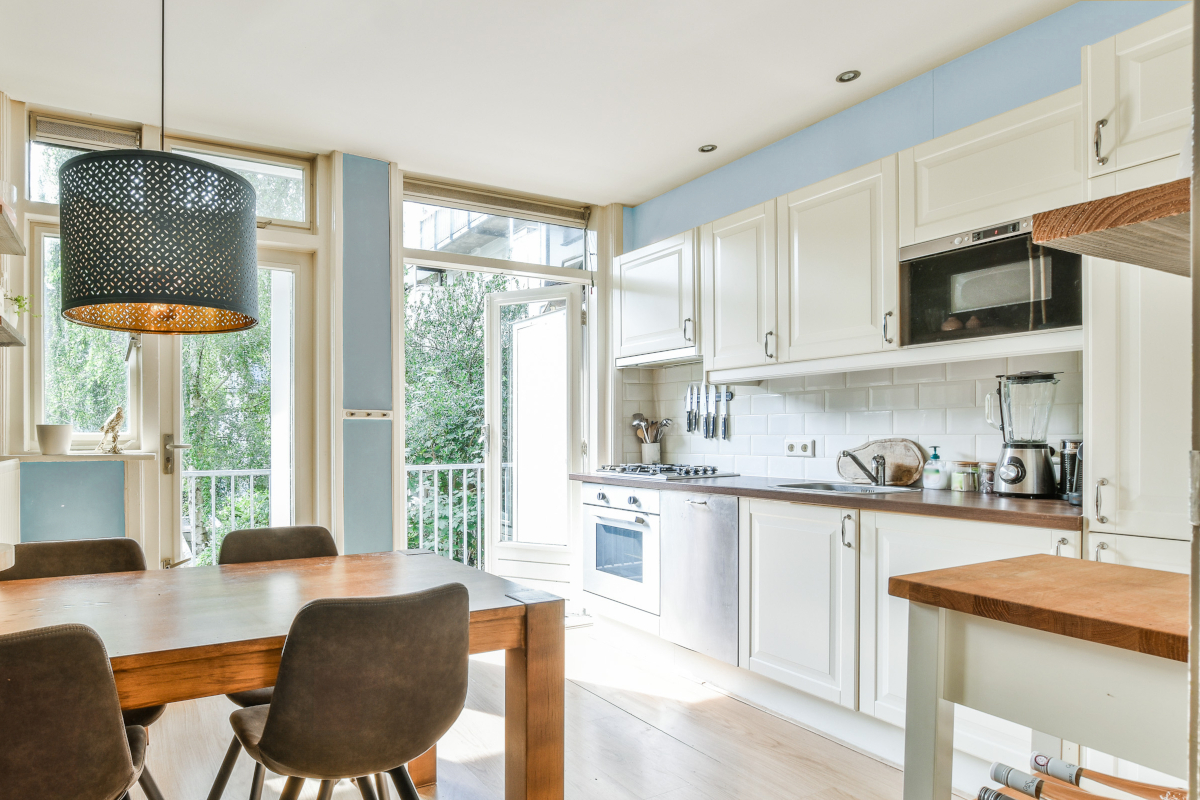
Opting for a light blue-gray color on your kitchen walls brings a calming feeling and makes the room appear larger. This blend of colors adds some personality and ambiance, but it’s still adaptable enough to pair well with diverse decor styles, offering a timeless elegance that endures many changing trends.
Suited for walls or cabinets, colors similar to Benjamin Moore’s Santorini Blue, make many feel happy because it’s soothing and creative—even in the smallest kitchens.
6. Beige
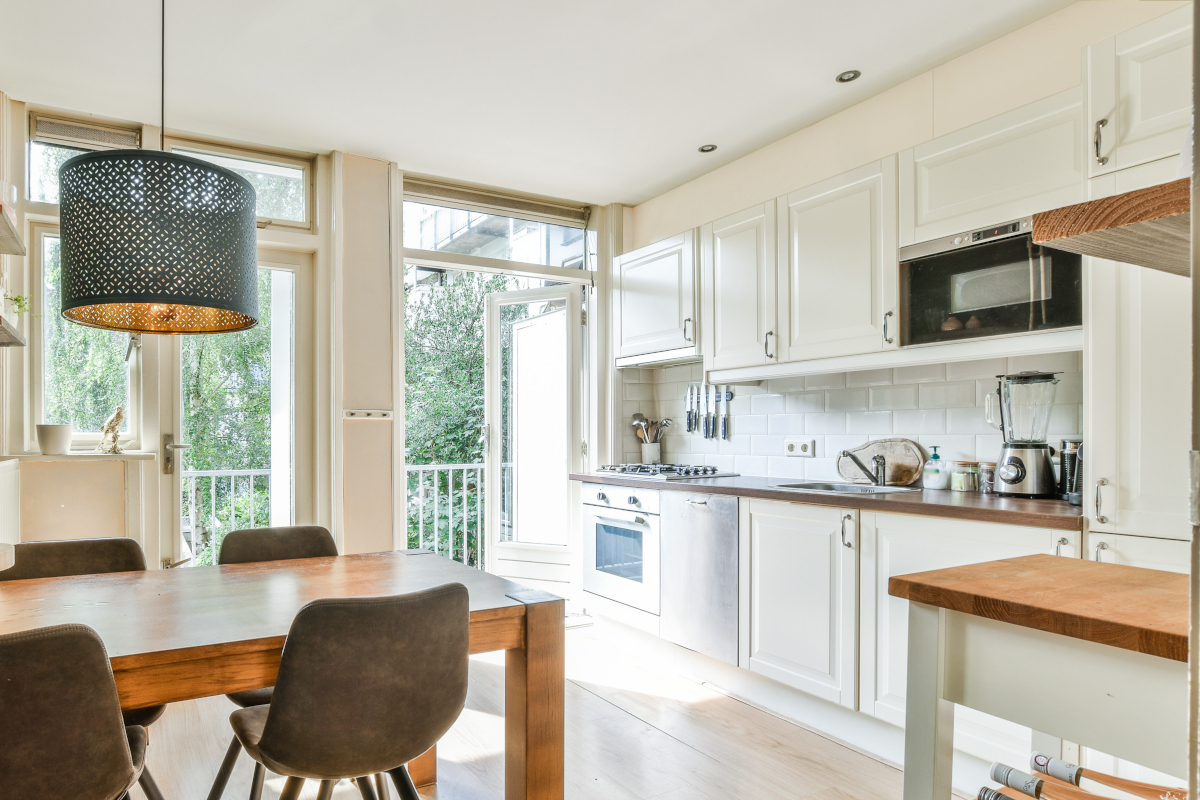
Beige is anything but boring; it’s a warm and inviting color for the heart of your home. Its soft, neutral color feels upscale and effortlessly complements many different textures, colors, and materials in a small kitchen.
If you think beige is outdated, think again. According to Peltier, “Warmer color tones are making a big comeback. We are starting to use light, warm-beige tones on cabinets and walls to give kitchens a welcoming vintage feel.”
Benjamin Moore has both Revere Pewter, a classic beige if there ever was one, and Swiss Coffee, a warmer option that looks extra rich in soft white light.
7. Warm White
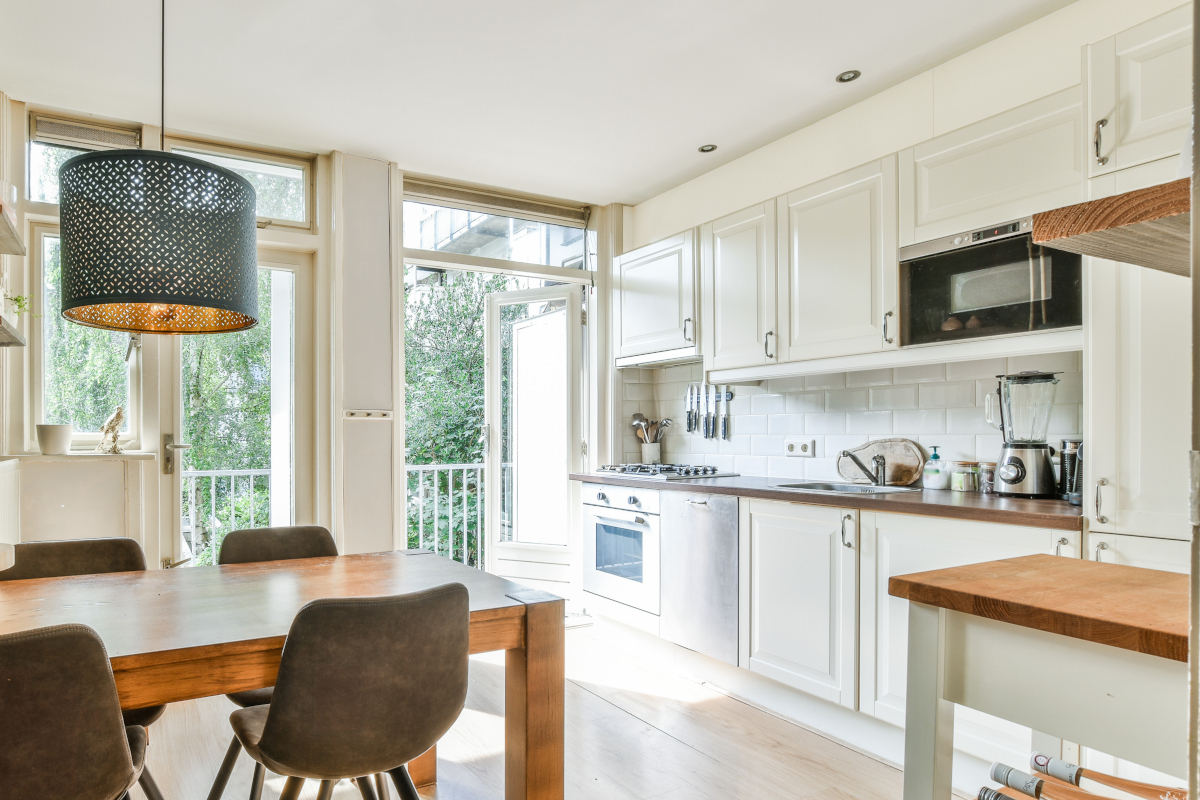
Warm white, like Glidden’s Gypsum or Benjamin Moore’s White Dove, has a slightly yellow, red, or orange undertone, giving it a softer and warmer appearance than a crisp or pure white. This paint color feels more relaxed and comfortable because warm colors have longer wavelengths that advance toward the eye and provide the illusion of heat and warmth. The hue provides a bright surface that reflects light instead of absorbing it like darker colors, making a small kitchen feel more expansive.
To ensure you choose the best warm white small kitchen paint colors (or any wall color, really), Harkrider recommends evaluating the space with swatches in different types of weather and at different times of day. Also, see how it looks under your kitchen light before painting.
8. Dark Gray
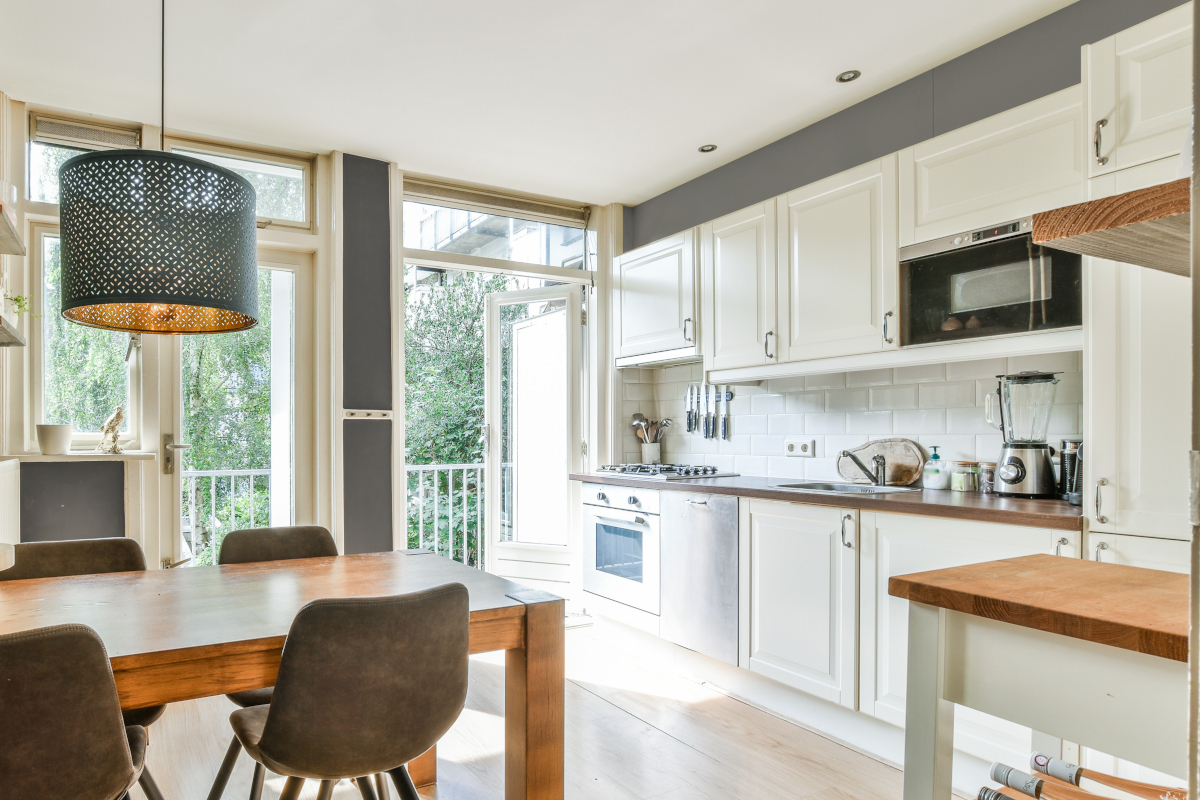
The typical advice to make a small culinary space feel larger is to choose light kitchen paint colors. However, Harkrider and Peltier have recommended darker hues in small spaces for a moody vibe, but this advice is design-dependent.
Peltier advises considering the amount of natural light available to help determine if your small kitchen can handle a darker color like Sherwin-Williams’ Peppercorn. To get a stunning mix of light and dark, she loves a black and white small kitchen with lower cabinets painted a dark color like Benjamin Moore’s Soot, and the top half painted a lighter color, such as Chantilly Lace.
RELATED: 20 Reasons Why Two-Tone Kitchen Cabinets Are Still Trendy
9. Rich Yellow
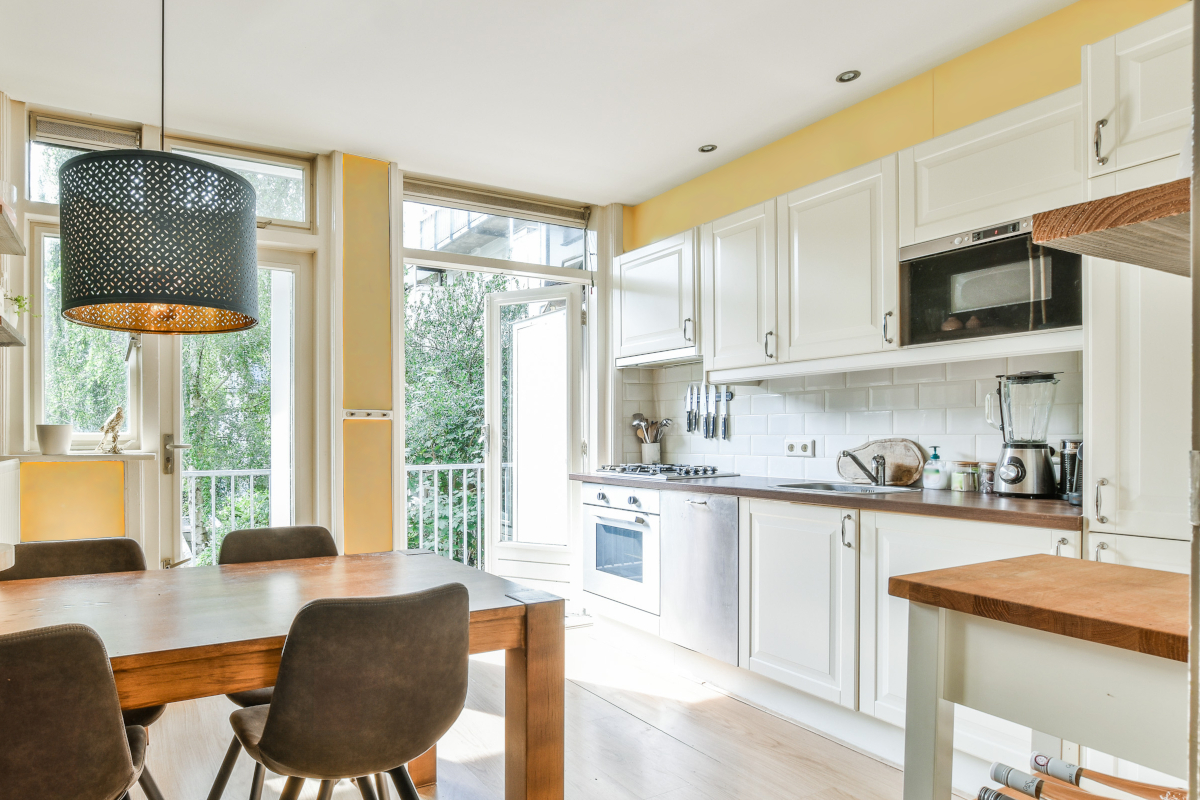
Small kitchens can often handle a bit of personality while making them look and feel bigger. Yellow hues, like Sunny Veranda from Sherwin-Williams, give a room warmth, energy, and positivity and can give a small kitchen some much-needed color.
Peltier has a great tip for choosing a hue if you have an open floor plan: “Pull a fun color from a pattern or wallpaper in a parallel space. If your kitchen is next to your family room, use a rich yellow from an accent pillow and use it on your kitchen walls. The cohesion connects the spaces, making it feel larger.”

